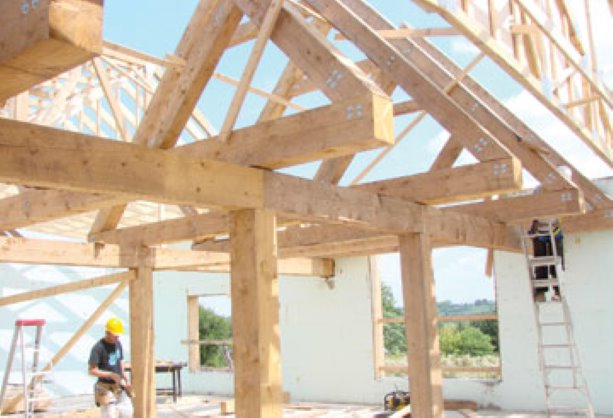With statistics indicating more than 75 per cent of Canadians die in hospitals or long-term care residences, only a handful of Ontario contractors have ever built a residential hospice. That select list now includes Tambro Construction Ltd.
With statistics indicating more than 75 per cent of Canadians die in hospitals or long-term care residences, only a handful of Ontario contractors have ever built a residential hospice. That select list now includes Tambro Construction Ltd.
The Guelph-based firm was the general contractor that oversaw the construction of the recently opened Bethell House in the Town of Caledon. Located in the scenic village of Inglewood, this unique 10-bedroom almost hotel-like facility provides full time end-of-life care for the terminally ill.
Designed by Caledon East-based Lazlo Nemeth Associates Architect with The Ventin Group Ltd. acting as the architect of record, it is the first residential hospice in what is known as the Headwaters Region.
Highlighted with a timber frame canopy entrance, some of the features of 14,700-square-foot facility include commercial washers and dryers, a head nurse’s office, a training centre for volunteers, a fully equipped kitchen, a common area for families, a guest room, an elevator and two residential wings with sunrooms.
Another feature is the corridors, which have eschewed the traditional hospital look through the use of wall paintings, rustic furniture and windows at both ends to let in natural light. Each of the 10, 15-foot-square rooms also have two windows and are equipped with a wheelchair-accessible ensuite bathroom, a mini-fridge and shelving. They also have access to a common courtyard.
“It’s quite self-contained and self-reliant with a lot of different spaces and a lot of things happening on a small footprint,” says David Dautovich, president, Design Connection International Inc., project manager for Hospice Caledon, the non-profit owner, manager, and developer.
While the design and construction phase only took two years, it was preceded by approximately five years of planning by Hospice Caledon and a number of volunteer committees, says Dautovich. Construction started in April of 2009.
Although it might be considered a small undertaking compared with many of the large-scale projects now underway in southern Ontario, Bethell house had its own unique set of challenges, not the least of which was the range of building materials involved, says Wiebe Kroezen, project manager with Tambro.
They include insulated concrete forms for all exterior walls up to the eaves, interior masonry load-bearing walls, a hollow-core precast floor system, metal stud interior non-load bearing walls, a wood truss roof system and the timber frame structure at the front canopy which is duplicated in the main dining area. Solar panels on the canopy roof provide heating for the domestic hot water.
As an example of the work and dedication the various subcontractors invested in the project, Kroezen points to the construction of the canopy by the framer, who fabricated a jig on site.
Because of the nature of the facility, extra attention was also paid to minimize sound transfer between the suites. This included offsetting electrical switches and receptacles, insulating the interior walls, installing resilient channels, and caulking the gypsum board to the floors.
Each of the suites and the sunrooms also have radiant floor heating to provide additional comfort to the residents. This, however, led to a complication during construction, says Kroezen.
“During the project, the grab-bar details at the toilets were revised,” he says.
“On account of the in-floor hearing, a floor-mounted metal support system could not be considered. The solution was to provide a wood-reinforced steel stud wall system up to the underside of the roof trusses while working around plumbing pipes and stacks.”
There were a number of other changes that were required. To expedite those changes and alternations Tambro was given the approval to write up and price those changes: “without requiring the detailed input of consultants which would have slowed the progress of the project,” says Kroezen.
“Our focus over the project was to complete it (the building) in a timely fashion — no different from so many others,” he says.
Project manager David Dautovich isn’t as reluctant to give the contractor extra credit. “Tambro was excellent in accommodating the extra level of detail that went into this project.”
The driving force behind the facility was Caledon resident Lorna Bethell, who donated $2 million to the project, says Bethell House executive director Gabrielle Coe. The donation was partially motivated by the suffering her husband witnessed as a prisoner of war in a German war camp during the Second World War. Funding was also provided by the province and other family members, she says.
Located on land leased from the Niagara Escarpment Commission, Bethell House is one of approximately 20 residential hospices in Ontario. A number of others including one in Wellington County and another Sudbury are also under construction, says Coe.











Recent Comments
comments for this post are closed